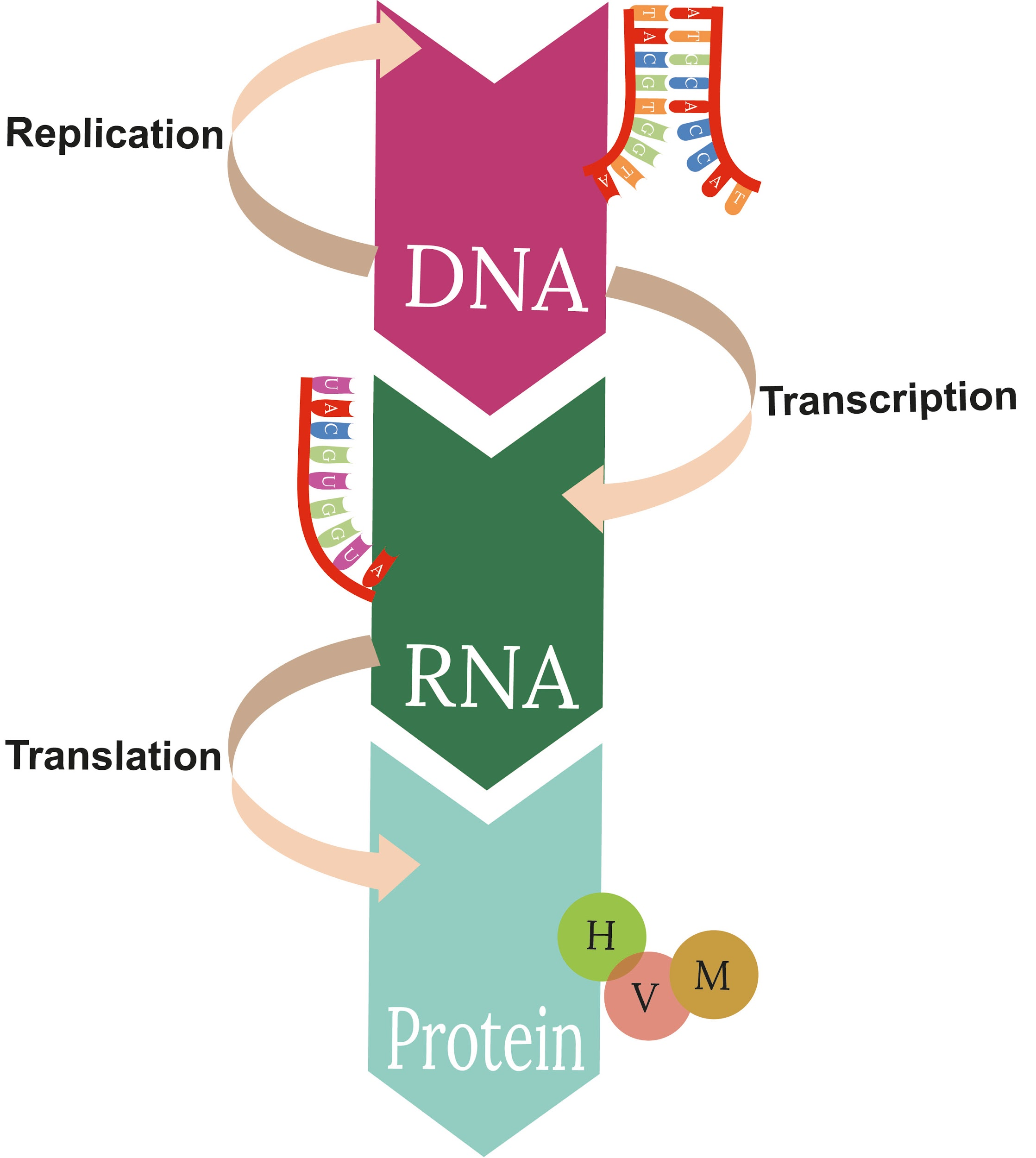
Reverse flow of information in the central dogma of molecular biology is
(a)DNA RNA Protein
(b)Protein DNA RNA
(c)mRNA tRNA DNA
(d)RNA DNA Protein
Answer
552.6k+ views
Hint: The central dogma was proposed by Francis Crick. The reverse flow of information in the central dogma of molecular biology is known as reverse transcription and it is catalyzed by the enzyme reverse transcriptase.
Complete Answer:
The central dogma of molecular biology states that there is a unidirectional flow of information from DNA to RNA and then to protein. This means that all the information for making proteins is contained within DNA and RNA acts as messengers to carry this information to the ribosomes. The ribosomes are the protein factories of the cell where the RNA is translated to make the protein. This making of proteins is known as gene expression and it consists of transcription and translation processes. During the reverse flow of information in the central dogma of molecular biology, the information flows from RNA to DNA which then forms RNA again which is translated to form proteins. This process is known as reverse transcription.
Additional information:
Transcription: This is the process of copying genetic information from DNA to RNA but unlike replication, only a segment of DNA consisting of the gene is transcripted into RNA. Here also the complementary rule applies but instead of thymine, uracil pairs with adenine. Transcription takes place within a certain region of DNA known as the transcription unit and it consists of a promoter, structural gene, and terminator region.
Translation: It is the process of polymerization of amino acids to form a polypeptide according to the sequence of bases present in the mRNA. It takes place in the ribosomes and requires energy. The translation process consists of two steps known as charging of tRNA and formation of peptide bonds between amino acids.
So, the correct option is ‘RNA DNA Protein’.
Note:
-Both the strands of the DNA are not copied during transcription as both the strands have different sequences which will result in the formation of different proteins.
-Also if two strands of RNA are formed then they would be complementary to each other and form a double-stranded RNA.
-The charging of tRNA is also known as aminoacylation of tRNA and it involves the activation of amino acids with the help of ATP.

Diagram: Unidirectional flow of information in the central dogma of molecular biology.
Complete Answer:
The central dogma of molecular biology states that there is a unidirectional flow of information from DNA to RNA and then to protein. This means that all the information for making proteins is contained within DNA and RNA acts as messengers to carry this information to the ribosomes. The ribosomes are the protein factories of the cell where the RNA is translated to make the protein. This making of proteins is known as gene expression and it consists of transcription and translation processes. During the reverse flow of information in the central dogma of molecular biology, the information flows from RNA to DNA which then forms RNA again which is translated to form proteins. This process is known as reverse transcription.
Additional information:
Transcription: This is the process of copying genetic information from DNA to RNA but unlike replication, only a segment of DNA consisting of the gene is transcripted into RNA. Here also the complementary rule applies but instead of thymine, uracil pairs with adenine. Transcription takes place within a certain region of DNA known as the transcription unit and it consists of a promoter, structural gene, and terminator region.
Translation: It is the process of polymerization of amino acids to form a polypeptide according to the sequence of bases present in the mRNA. It takes place in the ribosomes and requires energy. The translation process consists of two steps known as charging of tRNA and formation of peptide bonds between amino acids.
So, the correct option is ‘RNA DNA Protein’.
Note:
-Both the strands of the DNA are not copied during transcription as both the strands have different sequences which will result in the formation of different proteins.
-Also if two strands of RNA are formed then they would be complementary to each other and form a double-stranded RNA.
-The charging of tRNA is also known as aminoacylation of tRNA and it involves the activation of amino acids with the help of ATP.

Diagram: Unidirectional flow of information in the central dogma of molecular biology.
Recently Updated Pages
The number of solutions in x in 02pi for which sqrt class 12 maths CBSE

Write any two methods of preparation of phenol Give class 12 chemistry CBSE

Differentiate between action potential and resting class 12 biology CBSE

Two plane mirrors arranged at right angles to each class 12 physics CBSE

Which of the following molecules is are chiral A I class 12 chemistry CBSE

Name different types of neurons and give one function class 12 biology CBSE

Trending doubts
Which are the Top 10 Largest Countries of the World?

What are the major means of transport Explain each class 12 social science CBSE

Draw a labelled sketch of the human eye class 12 physics CBSE

Differentiate between insitu conservation and exsitu class 12 biology CBSE

The computer jargonwwww stands for Aworld wide web class 12 physics CBSE

State the principle of an ac generator and explain class 12 physics CBSE




